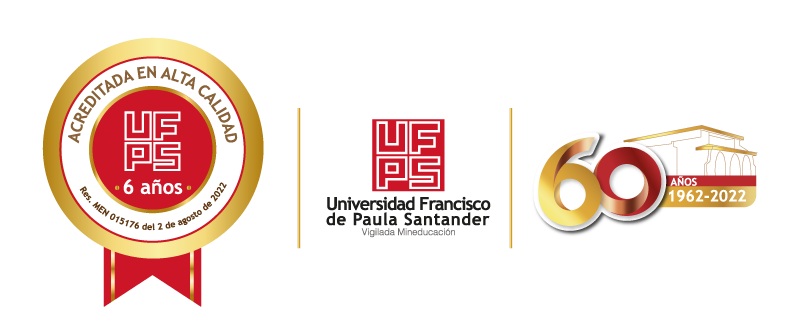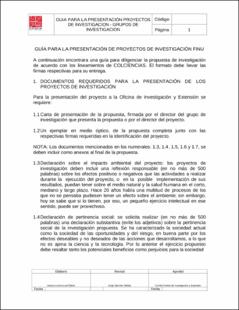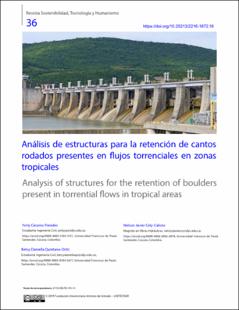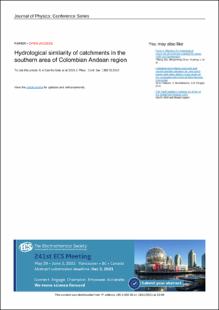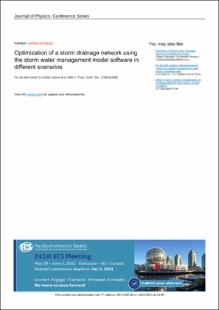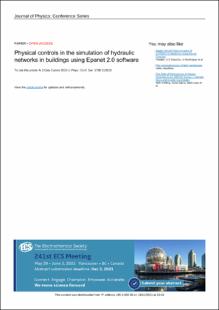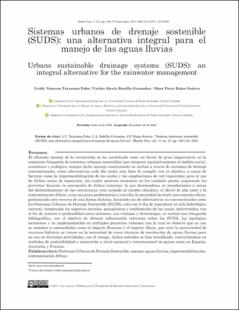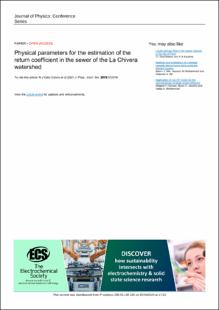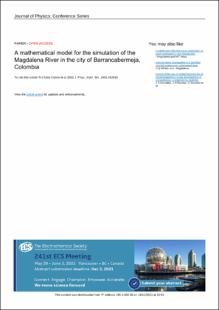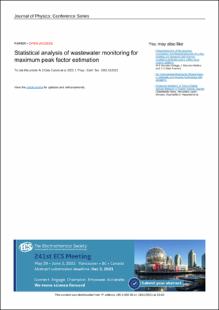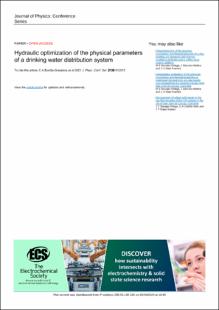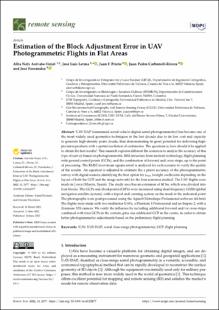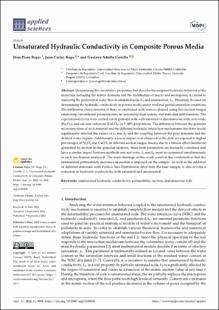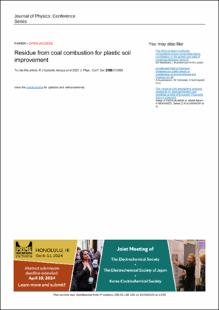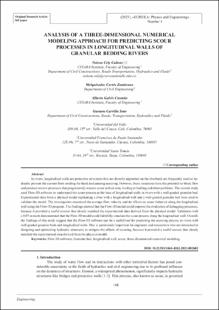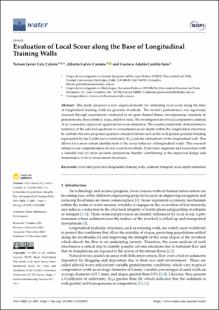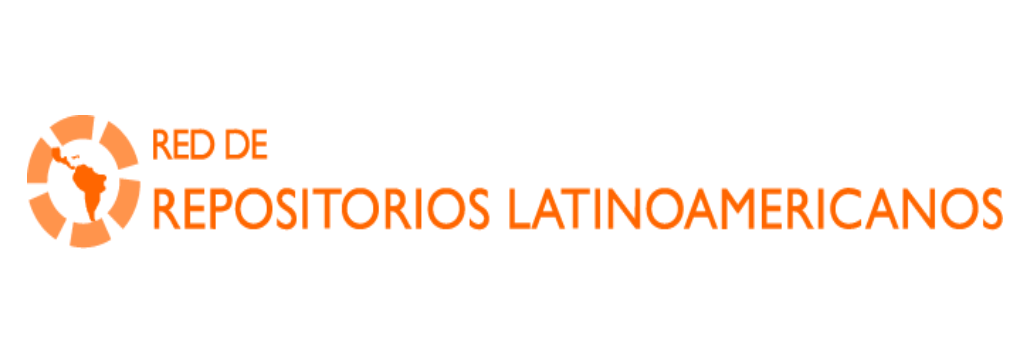Listar Hidrología y Recursos Hídricos - HYDROS por fecha de publicación
Mostrando ítems 1-17 de 17
-
Estudio comparativo de metodologías para estimación de caudales extremos en cuencas no instrumentadas
(Universidad Francisco de Paula SantanderCúcuta, Norte de Santander, 2016-02-02)La mayoría de obras civiles en cercanías a un cauce natural deben evaluar el riesgo ante la acción del agua en eventos de crecientes, en problemas tales como inundaciones, flujos torrenciales o socavación. La ingeniería ... -
Análisis de estructuras para la retención de cantos rodados presentes en flujos torrenciales en zonas tropicales
(Revista Sostenibilidad, Tecnología y HumanismoColombia, 2019-07-01)Los flujos de avalanchas son fenómenos naturales ocasionados por una erosión, un desprendimiento o la inestabilidad de un material depositado en el manto o corteza terrestre, causando ... -
Implementation of a physical model to determine the hydraulic behavior of mountain rivers
(Journal of Physics: Conference SeriesReino Unido, 2019-11-19)The present work consisted in the implementation of a small-scale physical model of a mountain river according to the similarity conditions that these models must satisfy, this model was implemented in a channel with ... -
Hydrological similarity of catchments in the southern area of Colombian Andean region
(Journal of Physics: Conference SeriesReino Unido, 2019-11-19)In every branch of science, the classification of the object of study shows the degree of understanding reached. Hydrology seeks this sorting system that classifies watersheds globally, a highly complex issue given the ... -
La educación inclusiva y las tecnologías en las prácticas pedagógicas
(Mundo FESCColombia, 2020-07-01)El factor más crítico para el desarrollo de la educación inclusiva es el docente, todavía son muchos los que no se encuentran suficientemente cualificados para afrontar la transformación que requiere el sistema educativo ... -
Optimization of a storm drainage network using the storm water management model software in different scenarios
(Journal of Physics: Conference SeriesReino Unido, 2020-12-05)The research developed was based on the design and optimization of a storm drainage network, with the objective of finding solutions to possible flooding events. For this purpose, three study areas of different topographic ... -
Physical controls in the simulation of hydraulic networks in buildings using Epanet 2.0 software
(Journal of Physics: Conference SeriesReino Unido, 2020-12-05)Water supply and distribution are an important design criterion in building construction. For this it is necessary to make an analysis of hydraulic networks, which is generally done through conventional methods based on ... -
Sistemas urbanos de drenaje sostenible (SUDS) una alternativa integral para el manejo de las aguas lluvias
(Mundo FESCColombia, 2021-01-01)El eficiente manejo de la escorrentía se ha constituido como un factor de gran importancia en la constante búsqueda de entornos urbanos sostenibles que integren equitativamente el ámbito social, económico y ecológico; ... -
Physical parameters for the estimation of the return coefficient in the sewer of the La Chivera watershed
(Journal of Physics: Conference Series, 2021-06-10)Estimating the amount of flow carried by the sanitary sewer system in a locality is essential for the design of new facilities. Having a record of the flow rates allows the adequate hydraulic design of a drainage system. ... -
A mathematical model for the simulation of the Magdalena River in the city of Barrancabermeja, Colombia
(Journal of Physics: Conference SeriesReino Unido, 2021-08-09)The integration of mathematical models allows the simulation of the spatiotemporal behavior of water quality parameters of a river. The representation of reality and different scenarios through simulation makes it possible ... -
Statistical analysis of wastewater monitoring for maximum peak factor estimation
(Journal of Physics: Conference SeriesReino Unido, 2021-08-09)The design and operation of sanitary sewerage systems are based on the knowledge of peak and the average daily wastewater flows. The maximum peak factor is obtained through the ratio of the maximum flow and the average ... -
Hydraulic optimization of the physical parameters of a drinking water distribution system
(Journal of Physics: Conference Series, 2021-09-24)Drinking-water distribution systems are generally designed with methodologies based on trial-and-error tests, which generate feasible results. However, these trials are not the most economical and reliable solution since ... -
Estimation of the Block Adjustment Error in UAV Photogrammetric Flights in Flat Areas
(Remote Sensing, 2022-06-16)UAV-DAP (unmanned aerial vehicle-digital aerial photogrammetry) has become one of the most widely used geomatics techniques in the last decade due to its low cost and capacity to generate high-density point clouds, thus ... -
Unsaturated Hydraulic Conductivity in Composite Porous Media
(Applied SciencesSuiza, 2022-09-09)Determining the constitutive properties that describe the incipient hydraulic behavior of the materials, including the matrix domains and the distribution of macro and micropores, is crucial to analyzing the preferential ... -
Residue from coal combustion for plastic soil improvement
(Journal of Physics: Conference Series, 2022-10)The combustion of coal in Hoffman-type furnaces generates ash as one of the process residues. This research seeks to make use of this residue to improve plastic subgrade soils in tertiary roads, considering that in ... -
Analysis of a three-dimensional numerical modeling approach for predicting scour processes in longitudinal walls of granular bedding rivers
(EUREKA: Physics and EngineeringEstonia, 2023-07-27)In rivers, longitudinal walls are protective structures that are directly supported on the riverbank are frequently used as hydraulic prevent the current from eroding the bank and causing scouring. However, these structures ... -
Evaluation of Local Scour along the Base of Longitudinal Training Walls
(Bommanna Krishnappan, 2023-11-17)This study proposes a new empirical model for estimating local scour along the base of longitudinal training walls for granular riverbeds. The model’s performance was rigorously assessed through experiments conducted in ...
